Abstract
Bornstein and Quevillon (1976) demonstrated generalization from a 2-hour self-instructional training session to on-task behavior in the classroom with 4-year-old overactive children. In an attempt to replicate this work with older children, eight 7- and 8-year-old hyperactive children were assigned to either a self-instructional training group or an attention-practice control group. On-task behavior in the classroom and performance measures in reading and arithmetic were assessed. The level of difficulty of these tasks was varied. The results of Bornstein and Quevillon's (1976) study were not replicated, although the subsequent introduction of a token program significantly increased on-task behavior.
Full text
PDF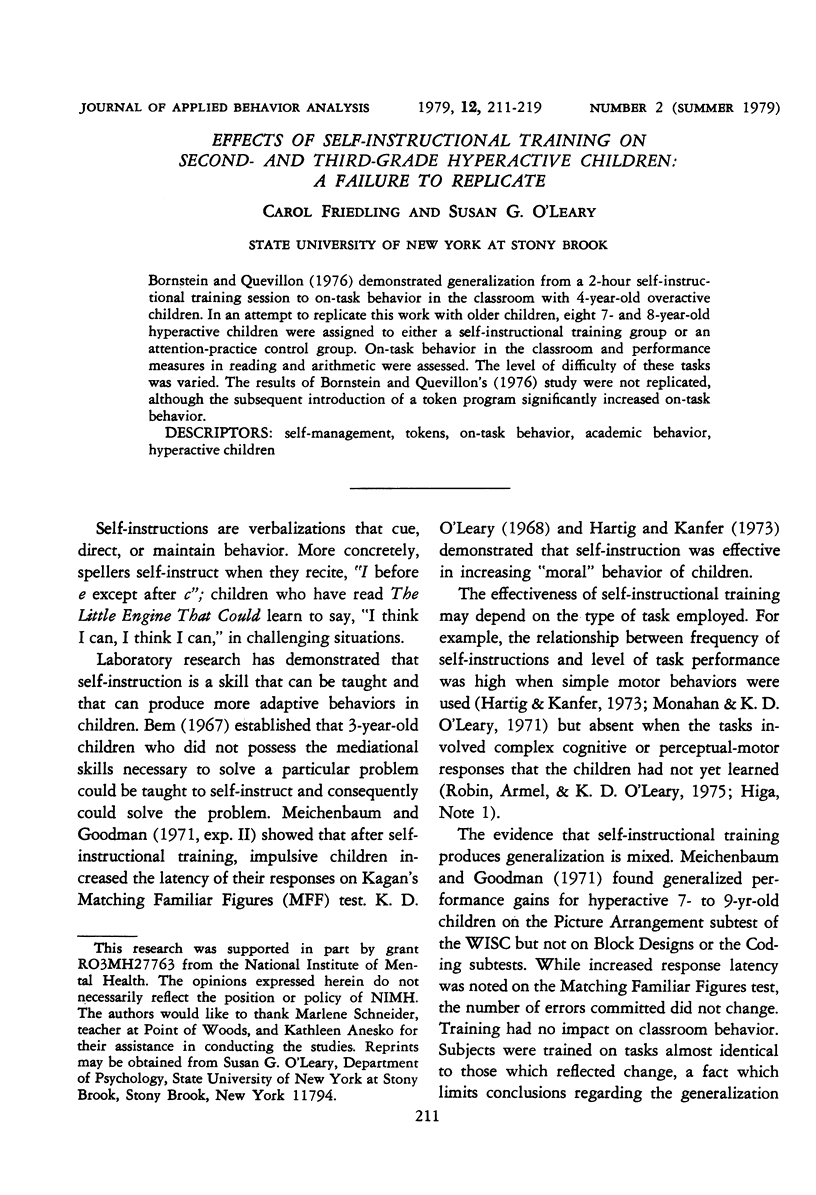
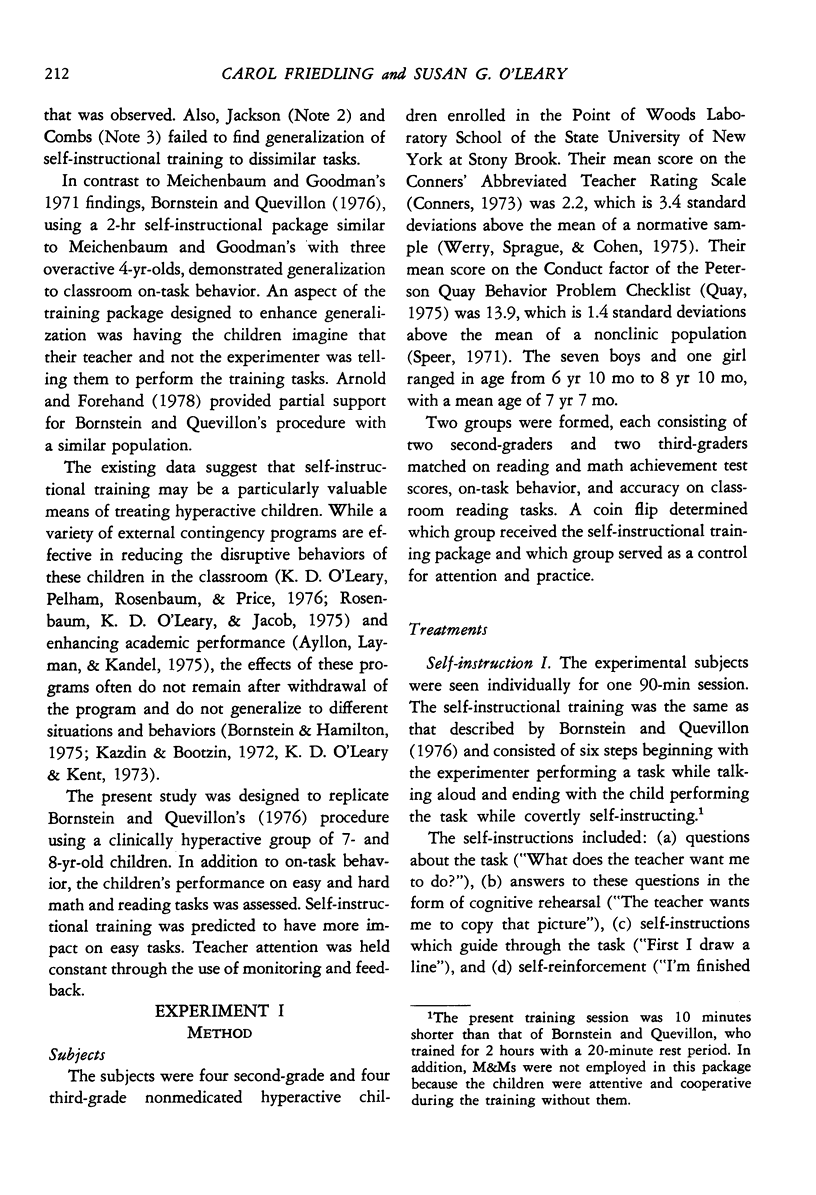
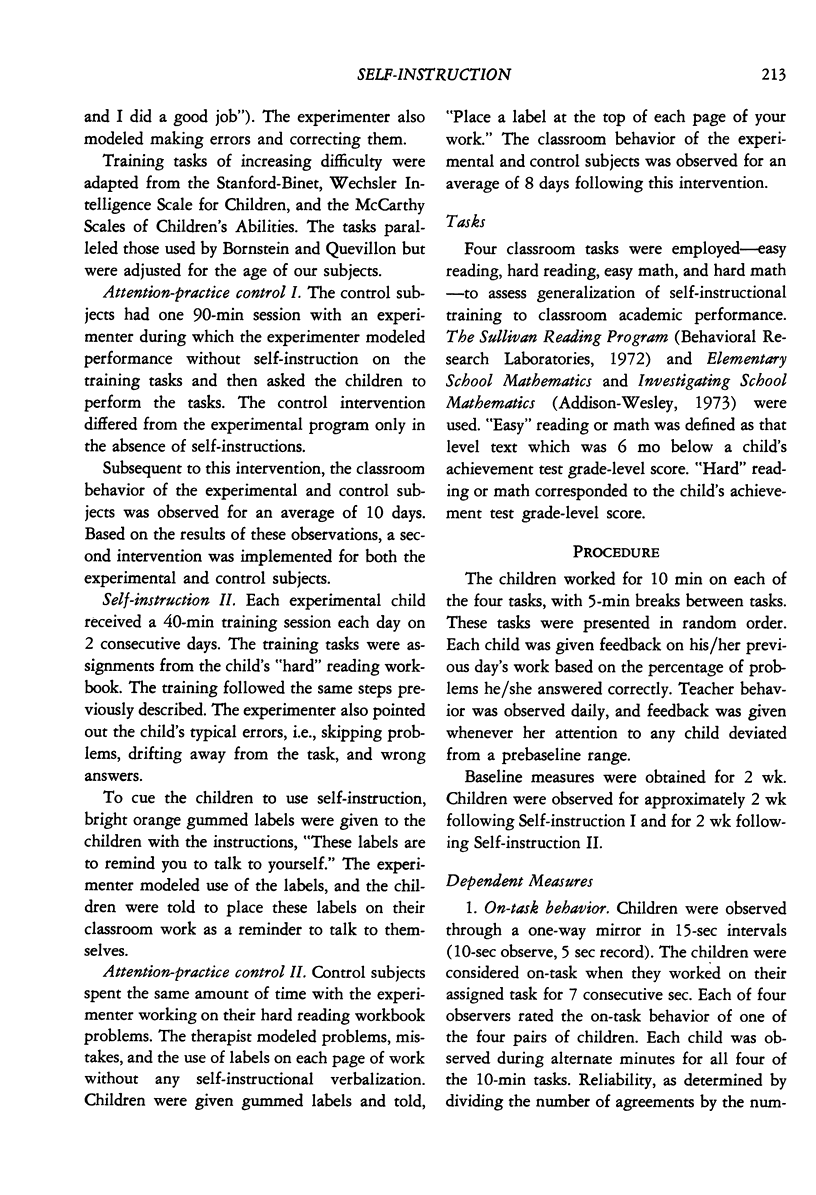
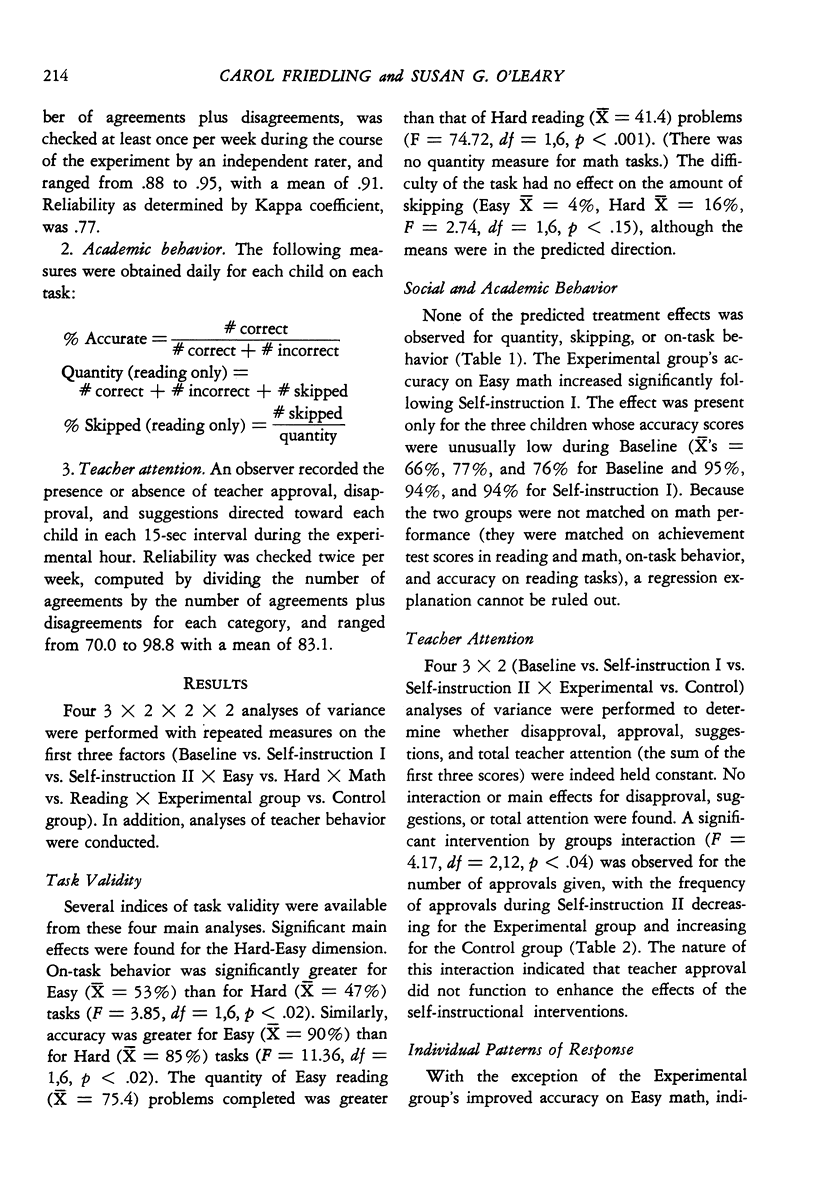


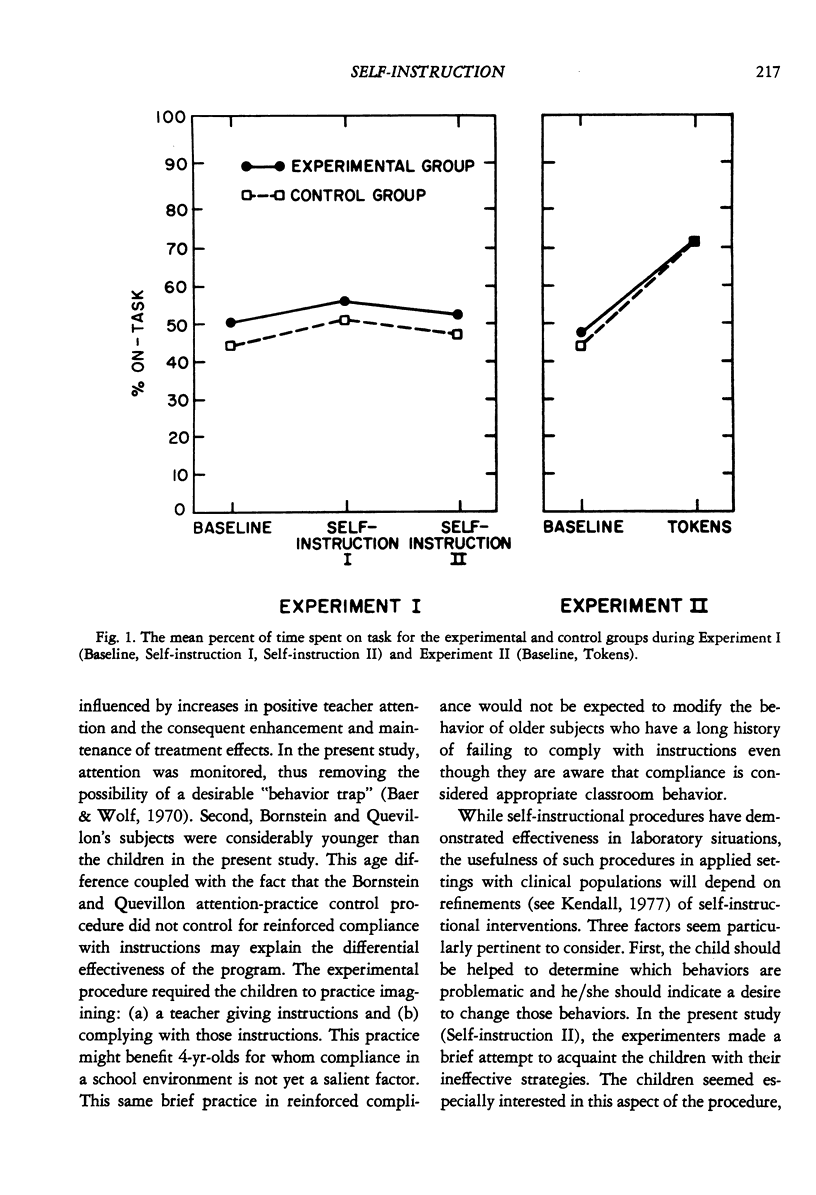
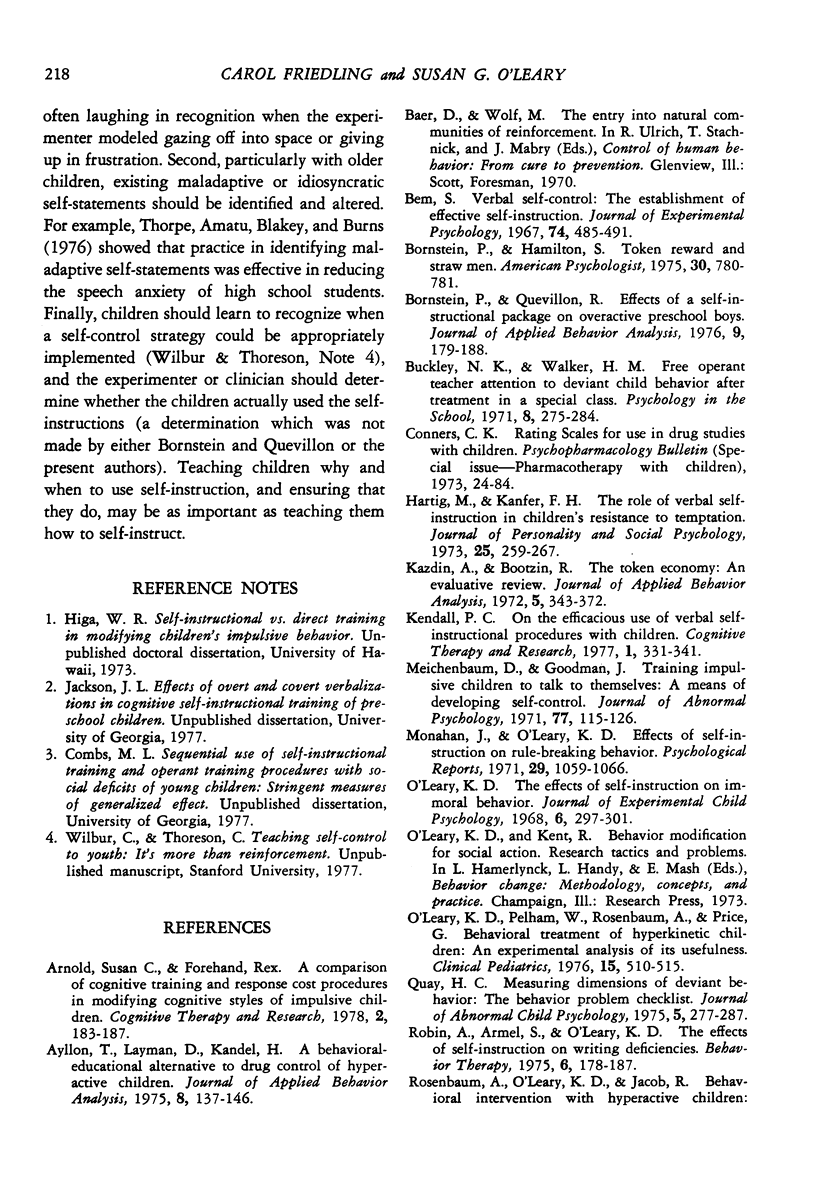
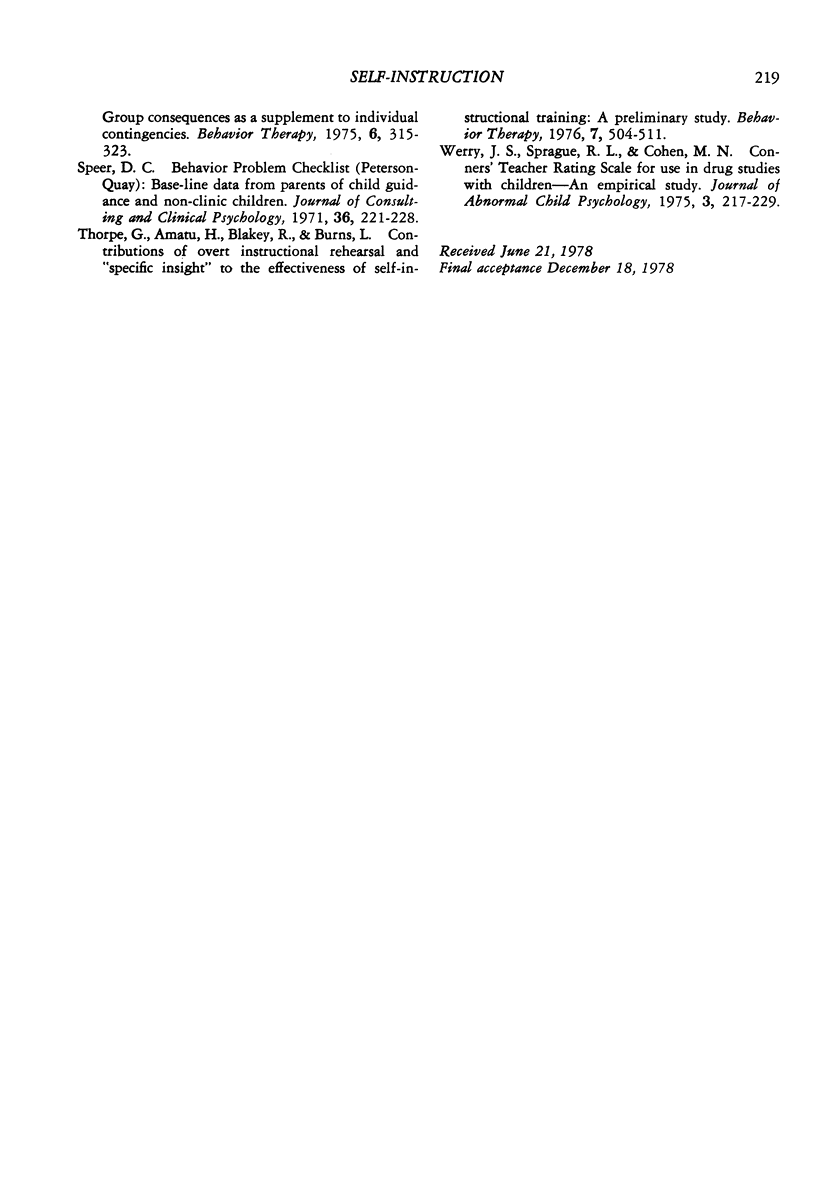
Selected References
These references are in PubMed. This may not be the complete list of references from this article.
- Ayllon T., Layman D., Kandel H. J. A behavioral-educational alternative to drug control of hyperactive children. J Appl Behav Anal. 1975 Summer;8(2):137–146. doi: 10.1901/jaba.1975.8-137. [DOI] [PMC free article] [PubMed] [Google Scholar]
- Bornstein P. H., Quevillon R. P. The effects of a self-instructional package on overactive preschool boys. J Appl Behav Anal. 1976 Summer;9(2):179–188. doi: 10.1901/jaba.1976.9-179. [DOI] [PMC free article] [PubMed] [Google Scholar]
- Hartig M., Kanfer F. H. The role of verbal self-instructions in children's resistance to temptation. J Pers Soc Psychol. 1973 Feb;25(2):259–267. doi: 10.1037/h0033938. [DOI] [PubMed] [Google Scholar]
- Kazdin A. E., Bootzin R. R. The token economy: an evaluative review. J Appl Behav Anal. 1972 Fall;5(3):343–372. doi: 10.1901/jaba.1972.5-343. [DOI] [PMC free article] [PubMed] [Google Scholar]
- Meichenbaum D. H., Goodman J. Training impulsive children to talk to themselves: a means of developing self-control. J Abnorm Psychol. 1971 Apr;77(2):115–126. doi: 10.1037/h0030773. [DOI] [PubMed] [Google Scholar]
- Monahan J., O'Leary K. D. Effects of self-instruction on rule-breaking behavior. Psychol Rep. 1971 Dec;29(3):1059–1066. doi: 10.2466/pr0.1971.29.3f.1059. [DOI] [PubMed] [Google Scholar]
- O'Leary K. D., Pelham W. E., Rosenbaum A., Price G. H. Behavioral treatment of hyperkinetic children. An experimental evaluation of its usefulness. Clin Pediatr (Phila) 1976 Jun;15(6):510–515. doi: 10.1177/000992287601500603. [DOI] [PubMed] [Google Scholar]
- O'Leary K. D. The effects of self-instruction on immoral behavior. J Exp Child Psychol. 1968 Jun;6(2):297–301. doi: 10.1016/0022-0965(68)90092-1. [DOI] [PubMed] [Google Scholar]
- Quay H. C. Measuring dimensions of deviant behavior: the Behavior Problem Checklist. J Abnorm Child Psychol. 1977;5(3):277–287. doi: 10.1007/BF00913698. [DOI] [PubMed] [Google Scholar]
- Speer D. C. Behavior problem checklist (Peterson-Quay): base-line data from parents of child guidance and nonclinic children. J Consult Clin Psychol. 1971 Apr;36(2):221–228. doi: 10.1037/h0030757. [DOI] [PubMed] [Google Scholar]
- Werry J. S., Sprague R. L., Cohen M. N. Conners' Teacher Rating Scale for use in drug studies with children--an empirical study. J Abnorm Child Psychol. 1975;3(3):217–229. doi: 10.1007/BF00916752. [DOI] [PubMed] [Google Scholar]


